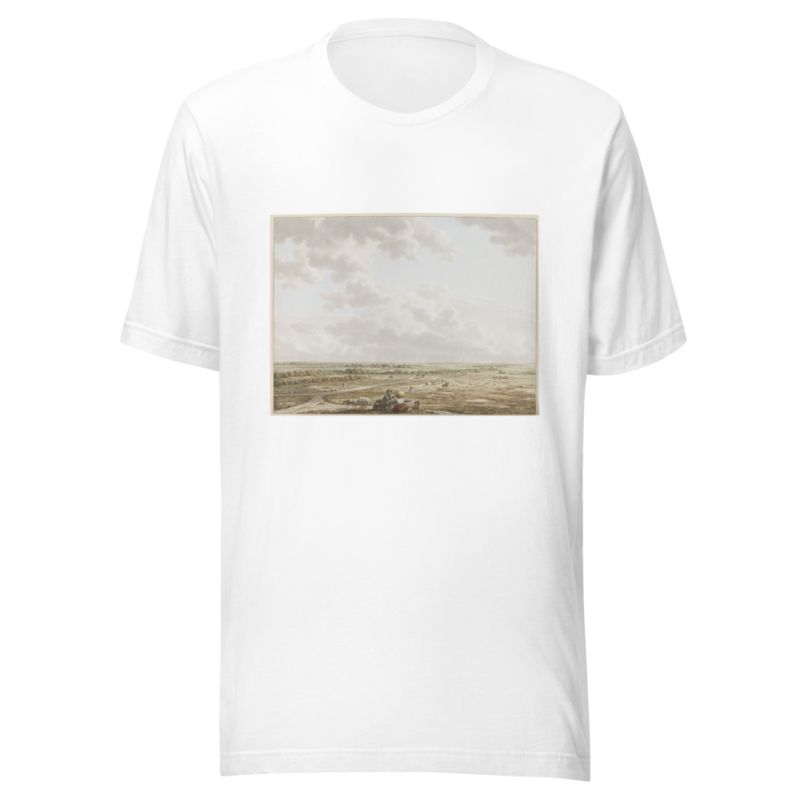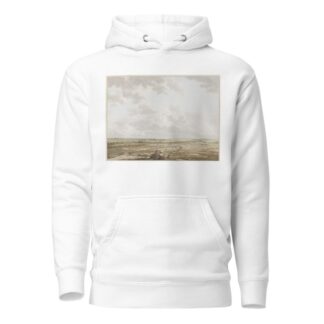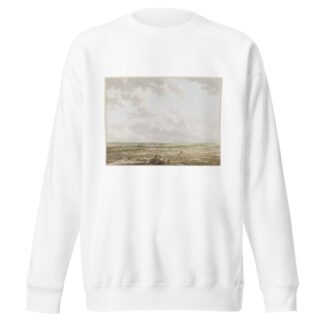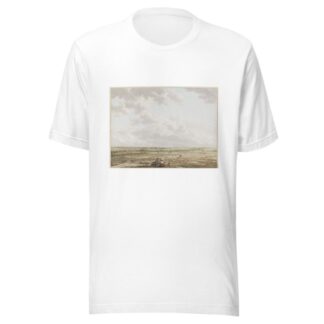Description
Gezicht van de Tafelberg bij Blaricum, met op de voorgrond Laren by Jacob Cats printed on a T-Shirt
About the T-Shirt
Regular fit
Standard length, the fabric easily gives into movement
Casual wear
A classic, everyday option loved by our customers
Side-seamed
Constructed by sewing two parts together, creating a fitted look
The Unisex Staple T-Shirt feels soft and light with just the right amount of stretch. It’s comfortable and flattering for all. We can’t compliment this shirt enough–it’s one of our crowd favorites, and it’s sure to be your next favorite too!
- Solid colors are 100% Airlume combed and ring-spun cotton
- Ash color is 99% combed and ring-spun cotton, 1% polyester
- Heather colors are 52% combed and ring-spun cotton, 48% polyester
- Athletic and Black Heather are 90% combed and ring-spun cotton, 10% polyester
- Heather Prism colors are 99% combed and ring-spun cotton, 1% polyester
- Fabric weight: 4.2 oz./yd.² (142 g/m²)
- Pre-shrunk fabric
- 30 singles
- Side-seamed construction
- Tear-away label
- Shoulder-to-shoulder taping
- Blank product sourced from Nicaragua, Mexico, Honduras, or the US
Jacob Cats (1741-1799)
Jacob Cats, an excellent Dutch draughtsman, who also etched and painted, was born at Altona in 1741 as the son of a Mennonite bookseller who had to flee Amsterdam because of a controversial publication. The family returned to Amsterdam after a few years. He studied under Abraham Starre and Pieter Louw. Initially he worked for the wallpaintings firm of Troost van Groenendoelen, later he established his own firm where he collaborated with i.a. Egbert van Drielst. As the market for wallpapers diminished, and his fame as a draughtsman rose, he started to focus uniquely on the latter.
He was celebrated for drawing townscapes and landscapes with realistically rendered persons and animals, his works having a distinct originality, and being marked by a poetical rendering of the features of nature, as well as by careful manipulation. He also created a good feeling of depth in his work. They are often suggestive of seventeenth-century artists such as Adriaan van de Velde and of Berchem, and are highly valued. He also copied some paintings on a smaller scale, and has left some etchings. He died at Amsterdam in 1799.






Reviews
There are no reviews yet.